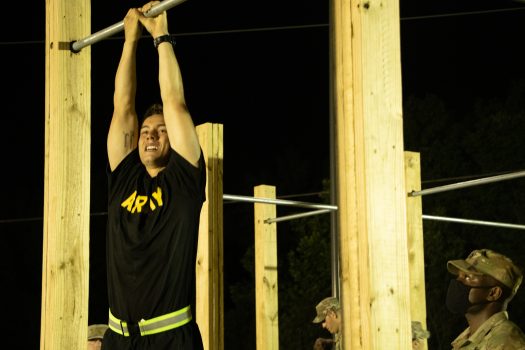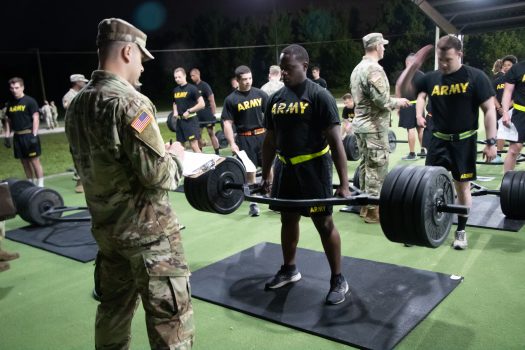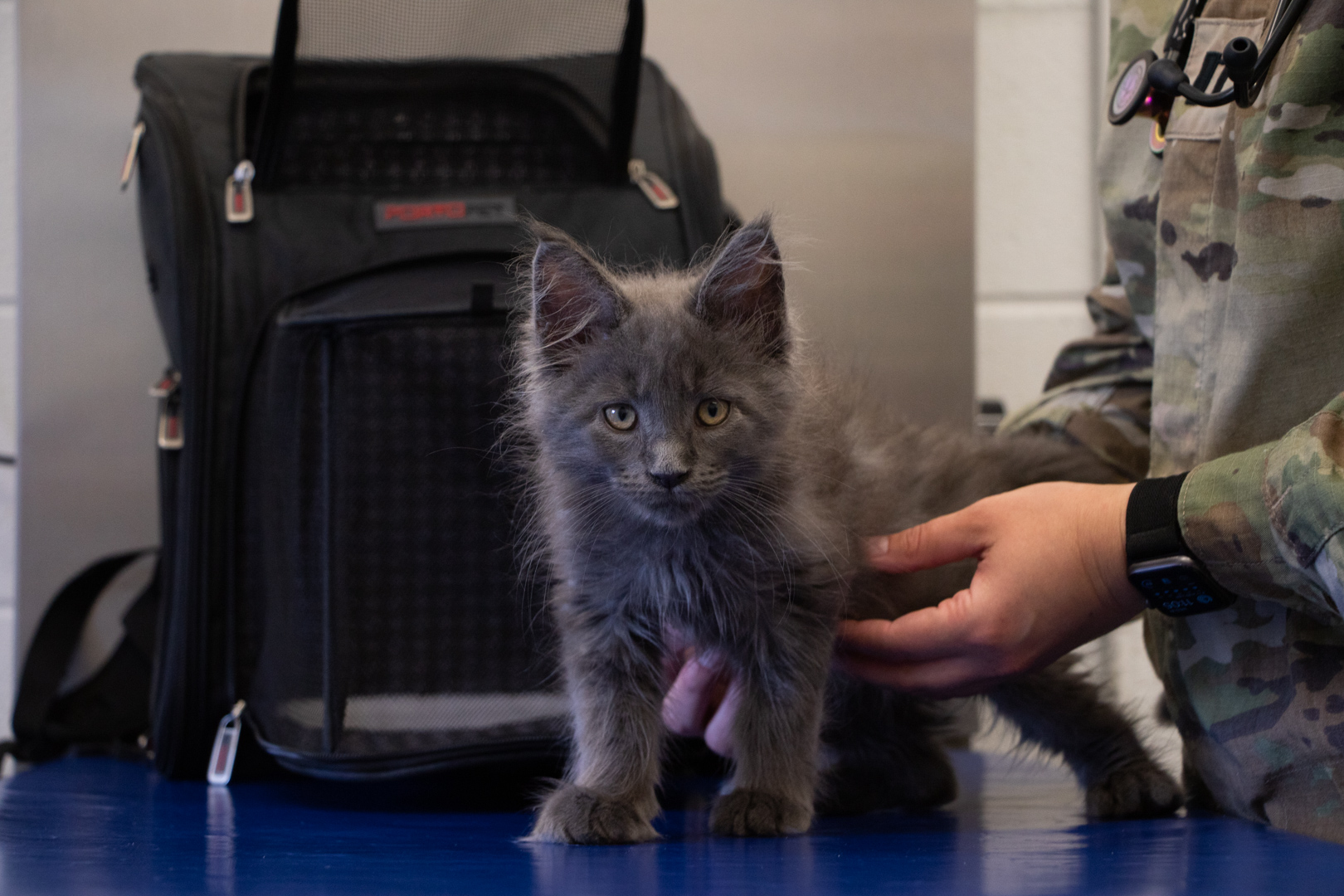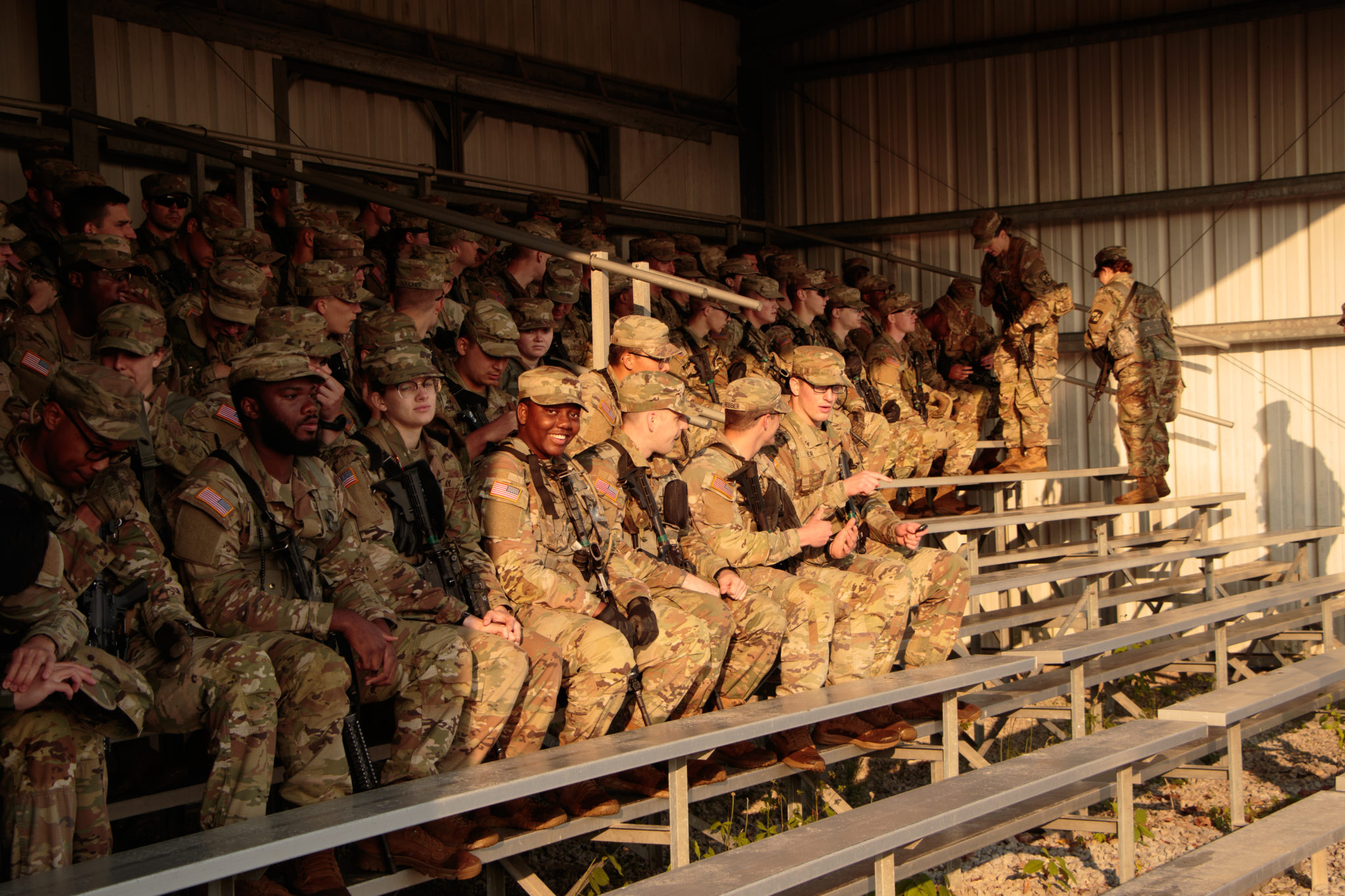At 4 am, June 6th, the Cadets of 1st Regiment, A Company started testing for the Army Combat Fitness Test (ACFT).
“I think getting woken up by our cadre at 3 am definitely gets my adrenaline pumping and it gets me ready for the day,” said Cadet Lindsay Martz, a student at Edinboro University from Slippery Rock, Pennsylvania.
The ACFT is one of the training events that Cadets have to perform that replaced the Army Physical Fitness Test (APFT).

“I enjoy the ACFT a lot more than the APFT. I think it’s a more comprehensive test,” said Cadet Willie Young, a student at the University of Oklahoma from Kansas City, Kansas. “It really shows you the true skills of being a soldier because some people would just max the pushups and sit ups and still be, like, super out of shape and not really be able to do their tasks, but I feel like if you max this, you actually can be a good soldier.”
The APFT only consisted of three exercises whereas the ACFT consist of six: a two-mile run, a max deadlift, a standing power throw, hand release pushups, a sprint drag carry event, and a leg tuck or plank.
“The ACFT was designed to measure the functional fitness of our soldiers and cadets so it really does measure fitness a little bit more holistically than the Army Physical Fitness Test,” said Lt. Col. Adam Heppe, the officer in charge (OIC) for the ACFT, a member of the CST occupational physical assessment (OPAT) and ACFT committee and is also the professor of military science at Worcester Polytechnic Institute.

During Advanced Camp the ACFT is a diagnostic test and not a test of record, but Cadets should still execute it as though it was a determining factor in their success at camp. Cadet Young believes the test deserves maximal effort from Cadets.
“It’s easy to pass, but they set a high bar to max it, so you almost always leave room on the table for improvement and it always sets a good goal for you,” said Young.
What the evaluators of the ACFT are concentrated on is each Cadet finishing the test properly and safely.
“Right now, we want to make sure they have the right form for the different events,” said Capt. Jahaira Ramos, CST OPAT and ACFT evaluator and assistant professor of military ccience at the University of Puerto Rico. “Most of them are learning and we want to make sure they do it safely. A lot of times they don’t do the correct form and we have to correct them to avoid or prevent them from getting hurt. So right now, the focus is mainly safety making sure they do the correct form.”




